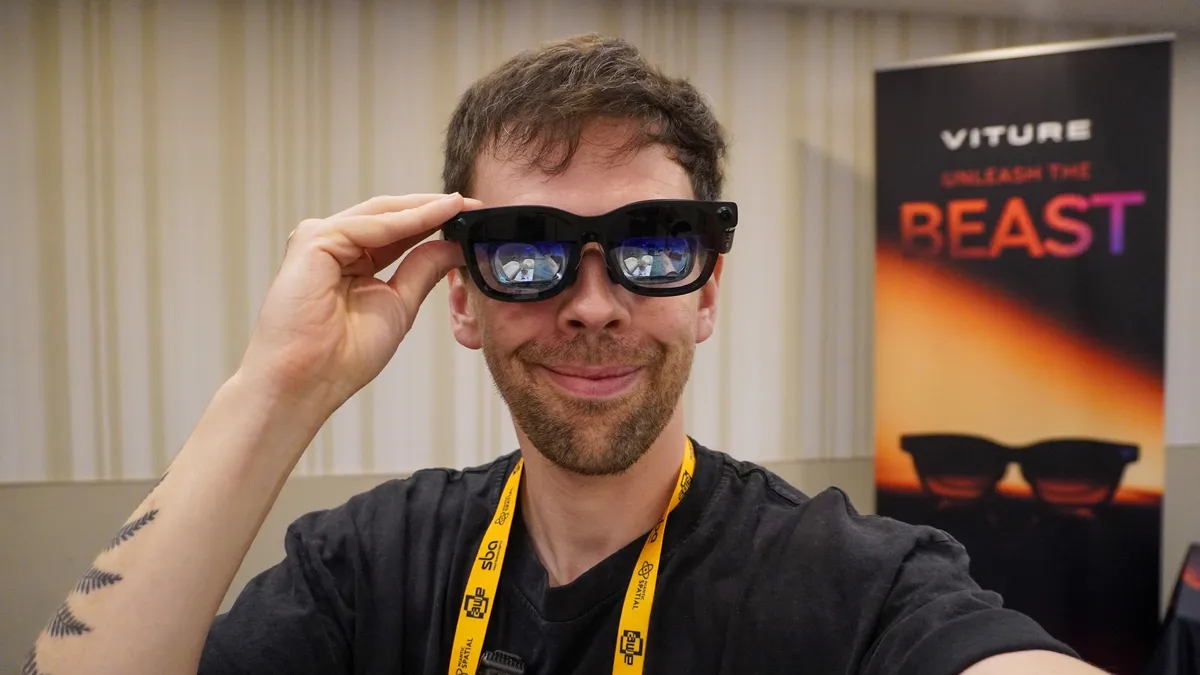
The news is out! Viture is set to revolutionize the augmented reality (AR) market with the launch of not just one, but four new pairs of AR glasses. Among them are the entry-level Luma, the professional-grade Luma Pro (launching today), the business-oriented Luma Ultra, and the standout product we will discuss here — the Viture Beast. I previously teased these products a few weeks back and awarded the Viture Beast the title of best of show at AWE 2025. Now, I can share my detailed experience, display some high-quality images, and clarify a significant specification change compared to my initial assessment in California.
The Viture Beast is set to launch this October at a price of $549. This raises an important question for potential buyers: should you wait for the Viture Beast or opt for the Xreal One Pro instead? Let’s dive into the details to help you make an informed decision.
First off, let’s address the obvious — the Viture Beast boasts the best screen I’ve experienced on any available AR glasses. The impressive 1200p resolution, combined with Viture’s tuning, ensures consistent sharpness and stunning color clarity across the entire display. However, you might have noticed a discrepancy in the field of view (FOV): previously mentioned as 60 degrees, the official specification now states it as 58 degrees. Viture made this adjustment to enhance the sharpness of the image across the screen, even though the optical system can technically support a wider FOV. In my experience, this slight difference is unlikely to be noticeable, as perceptible differences typically require a minimum of 5 degrees.
Similar to the Xreal One Pro, the Viture Beast offers built-in screen customization with 3DoF tracking. Additionally, 6DoF tracking will be introduced through a front camera in a future update. The customization options are extensive, including not just horizontal ultrawide settings, but also vertical configurations and multiple screen sizes. A feature intriguingly labeled as “ambient mode” is also included, though its exact function remains a mystery that I’m excited to explore further.
Another notable aspect of the Viture Beast is its use of a USB-C port for connectivity. While Viture’s proprietary magnetic port is sleek, the inclusion of a standard USB-C port means users won't be locked into purchasing specific cables for replacements. This practical design choice enhances user convenience and accessibility.
However, it’s important to address a couple of drawbacks. One notable absence in the Viture Beast is the traditional hardware myopia adjustment dials, which have been a hallmark of Viture’s previous models. According to Viture, integrating hardware-level 3DoF tracking conflicts with the presence of myopia adjustments, as they can interfere with tracking accuracy and optical stability. Consequently, the Viture Beast prioritizes a broader spatial experience. If myopia adjustments are essential for you, the Luma model is currently the better option.
In summary, the Viture Beast offers an impressive large-screen experience at a competitive price point — $100 less than the Xreal One Pro. It’s exhilarating to witness both companies pushing each other towards greater innovation, ultimately benefiting consumers. I look forward to testing the Viture Beast on long-haul trips and at home to evaluate how the wider field of view enhances the cinema experience on flights and productivity with ultrawide monitor settings.
If myopia adjustment is a priority for you, I recommend considering your options carefully. However, if you’re seeking the pinnacle of picture quality in AR glasses, waiting a little longer for the Viture Beast could be worth it.
Stay tuned for more updates from Tom's Guide as we continue to cover the latest in augmented reality technology.